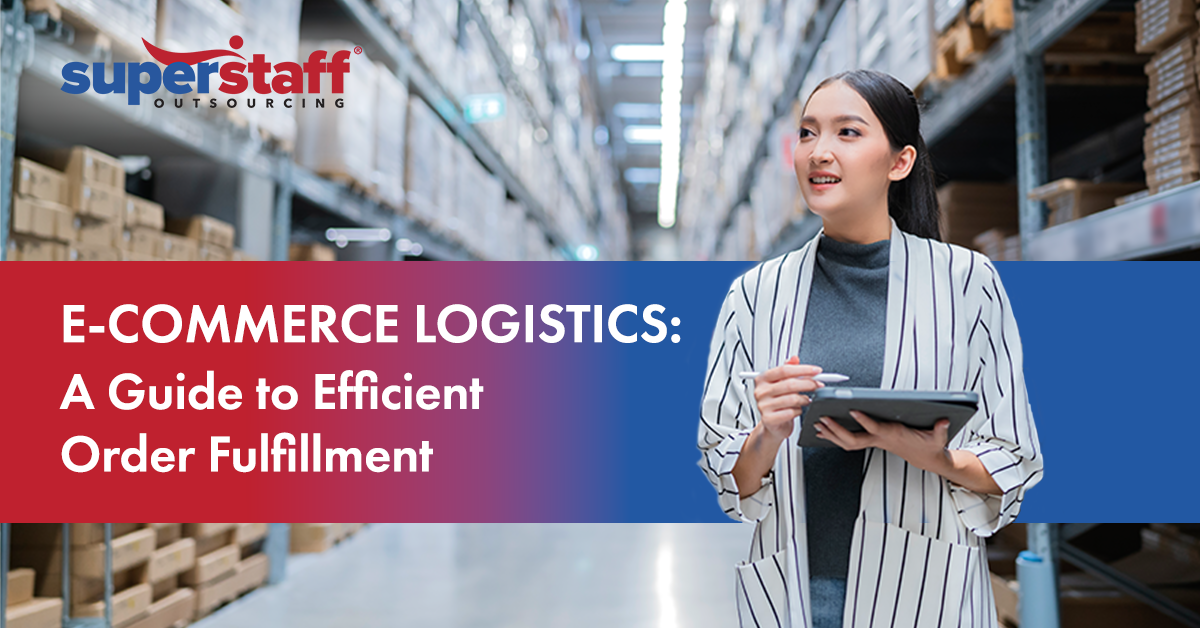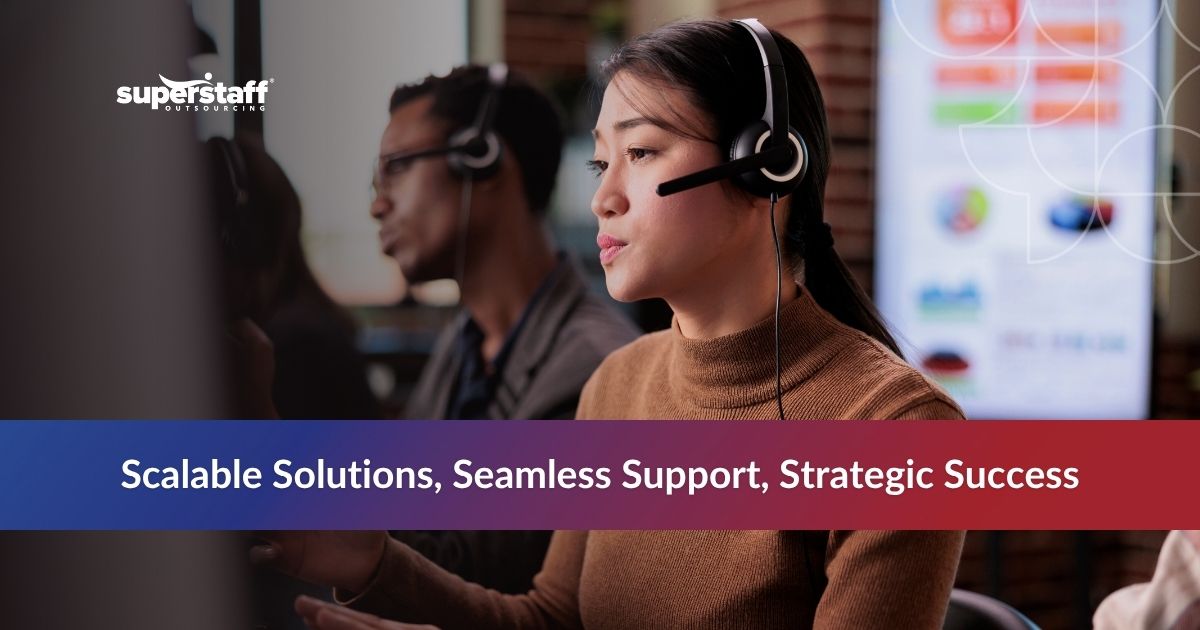
The success of an e-commerce business hinges on the ability to entice customers and fulfill their orders promptly and accurately, making e-commerce logistics one of the backbones of today’s retail industry.
With 38% of customers saying poor delivery experiences influence their decision to never shop at a store again, order fulfillment can make or break your business. Timely deliveries, quality customer service, accurate order processing, and real-time tracking also drive customer satisfaction and retention.
Price is another thing businesses need to be mindful of, as 61% of would-be buyers abandon their carts if they find the fees too high.
Fortunately, an e-commerce logistics solution addresses all these issues: outsourcing. From warehousing and inventory management to order handling and shipping, expert third-party partners can provide your business with what it needs to thrive.
Learn more about logistics for e-commerce and how you can fulfill orders efficiently in the infographic below!

What Is E-commerce Logistics?
E-commerce logistics are the procedures for transporting and delivering online purchases to customers. It spans the entire supply chain, covering critical aspects from order processing and inventory management to warehousing and final delivery.
With the continuous surge in online shopping, the demand for efficient e-commerce logistics solutions is also rising. These procedures are vital to customer satisfaction by improving order fulfillment speed, accuracy, and reliability.
As the e-commerce landscape evolves, the need for streamlined logistics becomes increasingly crucial to meet the growing expectations of online shoppers.
Warehouse management technology is becoming increasingly crucial in today’s e-commerce logistics landscape. From order processing to inventory control, innovative solutions play a vital role in enhancing operational efficiency. For instance, Pick-to-Light Systems offer efficient ways to handle high-density picking, significantly improving warehouse efficiency through real-time updates and reduced labor costs.
5 Types of E-commerce Logistics
Depending on your business type, you can opt for five different types of e-commerce logistics. Each has its way of fulfilling customer orders.
1. 3PL
Third-party logistics (3PL) involves outsourcing logistics and supply chain management to specialized external providers. These third-party companies typically are experts at handling logistics tasks such as warehousing, order fulfillment, and transportation.
Leveraging 3PL services allows businesses to streamline operations, reduce costs, and scale more efficiently. 3PL is particularly beneficial when there’s fluctuating demand, as providers offer flexibility in adapting to logistics needs.
With its global market value expected to reach around $1.5 trillion by 2028, the impact of 3PL on other businesses is only expected to grow.
2. Dropshipping
Dropshipping allows companies to sell products without physically stocking them. Instead, when a customer makes a purchase, the supplier sends the product directly to the customer.
This fulfillment method minimizes your need to invest in inventory or manage warehouse operations, significantly reducing upfront costs and risks. While dropshipping provides a low-risk entry into e-commerce, it requires strong partnerships with reliable suppliers to ensure timely deliveries.
The barrier to entry to dropshipping is low, allowing most companies to take advantage of it. Statista projects its market value will reach around $476.1 billion by 2026, highlighting its growing significance in the e-commerce landscape.
3. White Labeling
White labeling means putting your label on generic products created by one company and selling them under your brand.
This method allows you to offer products without the hassle of manufacturing. Instead, you can shift your focus to branding, marketing, and sales. It also contributes to your overall e-commerce supply chain by diversifying your offerings. Some great examples of standard white-labeled products are tote bags, mugs, and phone accessories.
4. In-house
You can also opt not to outsource and do logistics in-house. While it demands significant investments in infrastructure and operational resources, you can tailor your approach and have control over each stage of the process.
Companies that do in-house logistics are usually megabrands that can handle the demands of their distribution network, such as Amazon.
5. Wholesaling
This method is for companies whose target audience isn’t individuals but other businesses. Wholesaling means selling products in large amounts to retailers, who then sell them to consumers.
Through this model, you can streamline the distribution process, allowing you to reach a broader market. The most common industries that practice wholesaling are fashion and electronics.
Understanding the Process of E-commerce Logistics
Knowing what happens when the customer orders is crucial in choosing your business’s most strategic type of fulfillment. That’s why we’re breaking down the e-commerce logistics for you.
-
Order Processing and Fulfillment
E-commerce purchases start with receiving and acknowledging a customer’s order. Fulfillment involves taking the correct items from inventory, packing them securely, and preparing for shipping.
Time is of the essence, as 53% of customers tend to abandon or cancel their purchase if fulfillment time is too slow. To avoid potential issues, set expectations by letting the buyer know the estimated arrival time.
-
Inventory Management
Real-time tracking, demand forecasting, and minimizing stock-outs are all crucial components of inventory management. Fortunately, leveraging advanced technologies and software enables continuous monitoring, allowing for seamless adjustment of stock levels in response to demand fluctuations and inventory stock-outs.
Maintaining the fragile balance between having products on hand but not in excess prevents losing revenue and your customers’ trust.
-
Warehousing and Packaging
Your warehouses’ location, layout, and management directly impact the efficiency of picking and packing. Implementing a strategic system that efficiently sorts products by category minimizes the time to look for the correct item.
Packaging serves a dual purpose — it not only ensures a means to ship your products to the customer safely but also serves as a way to represent your brand. As a marketing vehicle, the choice of materials and design shapes how your audience sees your company.
-
Shipping and Delivery
Shipping and delivery are the culmination of the logistics process, which entails choosing appropriate shipping carriers, optimizing delivery routes, and providing accurate tracking information.
Transparency is crucial here. Businesses need to be open with their customers about shipping. Partnering with reliable carriers and updating tracking information is critical to building trust with your buyers. Since only 15% of customers are happy with delivery speeds, it’s vital to be the one they see as trustworthy.
-
Returns Management
Returns are an inevitable part of e-commerce, and how you handle it can make or break customer satisfaction. Clear policies and user-friendly processes are a great way to alleviate concerns and let your audience know you care.
An example of a user-friendly policy is offering free returns. It’s so effective that around 41% of buyers consider the lack of free returns a deal breaker when they shop.
Knowing the entire process will help you devise a logistics plan for your company. Fortunately, outsourcing already covers all these steps, plus other advantages.
Commonly Outsourced E-commerce Logistics Roles from a BPO Provider
A BPO provider experienced in your industry can give you a ready-made team of experts to lessen the hassle of hiring and training. Here are some of the typical roles you can outsource from Superstaff.
-
Logistics Support/Dispatch Services
SuperStaff’s logistics support includes real-time tracking, route optimization, and efficient dispatch services. They can enhance visibility into the supply chain, minimize delays, and optimize delivery routes by constantly communicating with drivers to keep customers updated.
The teams can also provide hotline services in case of emergencies. SuperStaff can handle incoming calls and dispatch the appropriate assistance to alleviate the crisis.
-
Customer Service (Omnichannel Support)
Your customers may come from different platforms and use other modes of communication, such as email or phone. SuperStaff’s omnichannel support involves personalized interactions across these channels, including live chat and social media.
The company’s Filipino team is known for their hospitality and empathy and can communicate effectively with your customers thanks to the country’s high literacy rate.
-
Multilingual Support
With three offices across three countries, you can eliminate the language barrier and improve market penetration with SuperStaff’s multilingual customer service. From English to Mandarin to German, you can cater to a broader audience and provide quality support, building trust and loyalty.
-
E-commerce/Order Management
SuperStaff’s e-commerce order management covers order processing, inventory management, and returns processing. These services include order entry, order tracking, and inventory updates in real-time using the latest tracking systems and software.
Another advantage of outsourcing order fulfillment is the ability to scale operations depending on fluctuating demand. For instance, holidays and peak seasons that see a surge in orders mean you need more agents to help you keep all processes seamless.
-
Tech or Help Desk Support
Tech and help desk support encompasses a wide range of services, from troubleshooting technical issues to providing product or service information.
The team uses various technologies to offer tiered support for complex problem-solving. SuperStaff’s IT experts can handle Forbes-level companies, making them more than capable of minimizing downtime and increasing end-user satisfaction.
-
Billings and Collections
Billing and collections involve accurate and timely invoicing, transparent financial reporting, and efficient collections processes. In e-commerce, these can include freight bills auditing and lading. These documents facilitate the smooth flow of goods from one place to another. Any errors can result in lost cargo and delayed delivery.
By outsourcing these functions to SuperStaff, businesses can focus on core operations while ensuring financial stability. The team follows industry best practices, reducing billing errors. The company also has strict quality control measures, so all documents are accurate.
Advantages of Outsourcing E-commerce Logistics
Choosing to outsource logistics comes with various advantages. Not only do you have less stress in setting up your supply chain, but you also gain the following benefits.
-
Cost-Efficiency
Outsourcing logistics eliminates the need for warehousing and additional staff for sorting and packaging orders, leading to substantial savings.
Additionally, you reduce paying for freight shipping, as 3PL companies pack goods from different companies at once, meaning they can split the cost among all their clients. Their expertise also prevents costly mistakes that can arise if you are unfamiliar with the industry or trying to set up your in-house team.
You can enjoy the cost-efficiency benefits of outsourcing by tapping third-party providers like SuperStaff with established infrastructures.
-
Access to Expertise
Minimize the time to hire by partnering with outsourcing companies like SuperStaff that offer an array of services, from freight bill auditing to accounting and bookkeeping. Leveraging their deep understanding of logistics intricacies, providers guarantee they can execute logistics with precision, compliance, and industry best practices.
-
Scalability
Outsourcing logistics enables businesses to scale operations swiftly and efficiently by offering emergency hotlines and dispatching delivery drivers. These allow you to adjust to evolving market demands without hefty upfront investments.
You can also seamlessly adjust your range of services depending on your company’s needs. For instance, upgrade your plan if you plan to expand.
-
Improved Customer Experience
Meeting customer expectations fuels satisfaction and loyalty — vital aspects in the competitive e-commerce industry. Your company must answer questions and alleviate customer concerns. SuperStaff’s multilingual customer service and tracking and tracing inquiries feature can improve communication and problem resolution.
- Focus on Core Competencies
Delegating back-office service solutions such as data entry and analysis empowers businesses to redirect internal resources toward product development, marketing, and innovation. This strategic focus enhances overall business efficiency and gives you an edge over competitors.
While outsourcing solves many problems regarding logistics, it’s still vital to know how to fulfill orders to satisfy your customers efficiently. Stay informed of the best practices outlined in the next section to optimize its advantages and customer expectations effectively.
E-commerce Logistics: Best Practices To Improve Order Fulfillment
Handling e-commerce logistics means ensuring that every step is efficient. Here are some of the best practices you can utilize to guarantee your order fulfillment is on point.
-
Leveraging Technology
Warehouse management systems, among other technologies, play a crucial role in various tasks, from order processing to inventory management. These tools contribute significantly to the efficiency and effectiveness of logistics operations.
Additionally, order tracking platforms offer real-time visibility, empowering customers to track their orders from warehouse to doorstep. Integrating these tools enhances accuracy, speed, and transparency for a more reliable and satisfactory customer experience.
-
Optimizing Warehouse Operations
Boosting warehouse efficiency involves strategically organizing layouts, inventory, and workflows. Embrace automation, including robotic picking and packing systems, to minimize errors and accelerate operations.
Implementing these measures allows businesses to create a more streamlined and efficient warehouse environment, improving productivity and reducing operational costs.
-
Strategic Inventory Placement
Conduct a thorough analysis of customer demographics and demand patterns to position inventory strategically. Furthermore, placing stock closer to target customer bases reduces shipping times and costs.
Aligning inventory placement with customer needs helps businesses optimize their logistics strategy, enhance customer satisfaction, and achieve more cost-effective and timely deliveries.
-
Seamless Communication Channels
Establishing seamless communication channels between different stages, from order processing to shipping and delivery, ensures everyone involved can adapt swiftly to any issues or changes. This proactive approach to communication enhances coordination and responsiveness, contributing to a more agile and efficient logistics process.
-
Customer-Focused Returns Management
A study found that 81% of customers will repurchase after a positive returns experience, emphasizing the impact of a customer-centric returns process on loyalty. Simplifying the procedure, providing return labels, and ensuring swift processing contribute to customer satisfaction.
-
Partner with a BPO provider
Partnering with a BPO provider means you can focus on your business goals and growth without worrying about hiring and training in-house teams for operations.
SuperStaff, with its offshore and nearshore capabilities, offers access to a global talent pool and the flexibility to scale operations depending on demand. The 24/7 support the company provides ensures continuous service availability, which is critical in an industry that requires round-the-clock operations or has a global audience.
Leave the Logistics Unease; Turn to Expertise
Having streamlined e-commerce logistics is the key to a customer base that trusts you and can help expand your brand. Consider Philippines customer service outsourcing to address the struggles of planning the supply chain and keeping customers happy.
SuperStaff provides the support you need when outsourcing to the Philippines. We have nearshore call center services that your customers can reach for inquiries, alleviating worries regarding product deliveries.
Ready to partner with an expert team? Contact us today for more information about our services.






